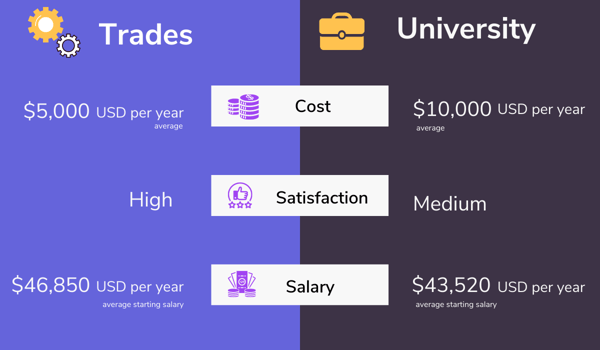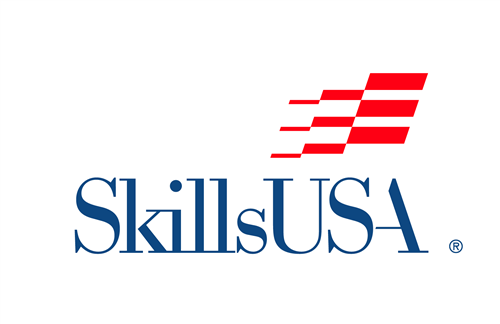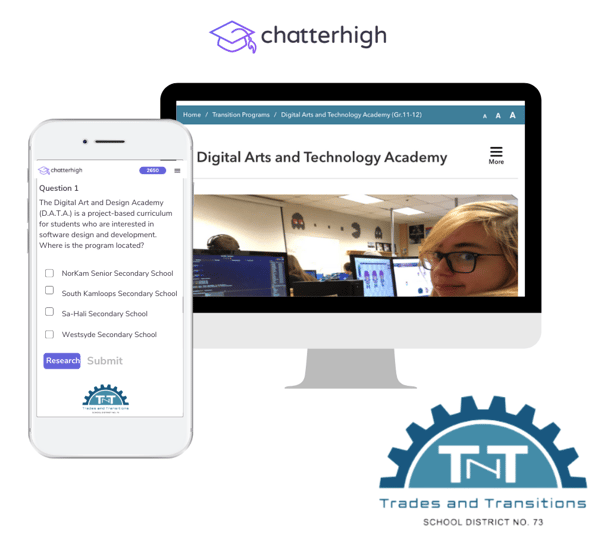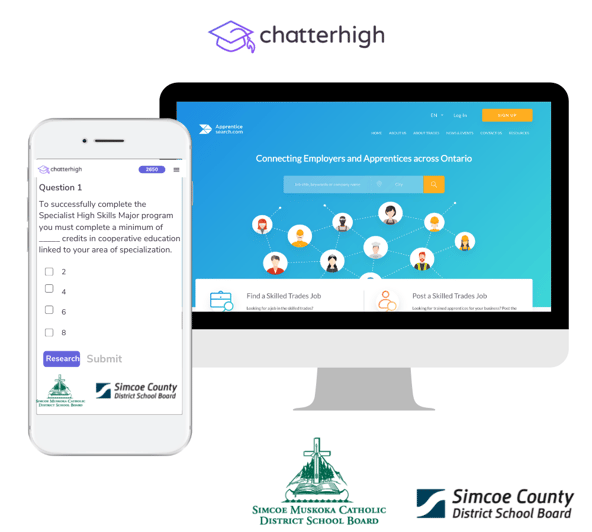5 Reasons Why Students Should Explore Skilled Trades Careers
by Tanvir Kaur on 26 May, 2022
Career pathways in skilled trades require specific knowledge and hands-on experience. A career in the skilled trades may appeal to students who want to gain on-the-job experience, spend a little less time in the classroom during post-secondary education, and earn a good income. Skilled trades are in great demand in both Canada and the United States. Trades are classified into four major categories: construction, transportation, manufacturing, and services. Each category provides different possibilities for career exploration.
TL;DR
Students should be aware of the following benefits of skilled trades to make an informed decision about their future:
- Careers in skilled trades have high job satisfaction.
- Students in skilled trade programs gain paid hands-on experience.
- The programs provide a reasonable cost-benefit.
- Students are given a variety of opportunities to innovate and create.
- Skilled professions have a huge market demand.
Many organizations work to encourage students to pursue professions in trades via various programs and activities. Read on to learn more about the benefits of such career pathways and how organizations are adopting creative approaches to engage students in skilled trades career exploration.
>> Check out the Daily Quiz or our Collaborative Modules for an engaging way to explore pathways in the trades! <<
So, what exactly are the benefits of pursuing a trade?
 1. High levels of job satisfaction
1. High levels of job satisfaction
“ 83% of the trade workers are satisfied with their career choice”
Work satisfaction in skilled trade jobs is high. Other industries are facing high turnover rates, whereas workers in skilled trades are happy with their work. Trade workers are able to find meaning and value in their work, making it an attractive career choice for young students. Students will be satisfied with their work since their skills and abilities will be put to use. In terms of compensation, most skilled employees in Canada earn more than those in other occupations. The average salary in the United States is approximate $47,000-70,000 per year, based on the level. On the other hand, the average salary for a university graduate in the US is $43,520 annually. The numbers above show that students have the opportunity to make a decent life for themselves while also experiencing a high level of work satisfaction. In Canada, the average annual salary ranges from $56,000 to $76,000 in the year of certification. A skilled trade career offers high job security since these skills are required to keep our daily lives running smoothly. The high demand for skilled workers adds stability to a career by ensuring that there are always jobs available.
2. Hands-on experience
Students gain expertise in a specific field via hands-on training in skilled trades programs and careers. The training methods are kept up to date with current trends, allowing students to stay on top of their industry. Students can gain real-world experience immediately. Approximately 80% of the time is spent in the field during apprenticeship programs. This allows students to obtain real-world experience.
3. Cost-Benefit
Unlike most post-secondary degrees, which are costly due to their length and nature, trade programs are less expensive and give students real-world experience. In the United States, the average cost of a trade school tuition is approximately $5,000 per year. The average cost of university tuition in the US ranges between $10,000 to $50,000 per year. The cost of the trade program depends upon the nature and duration of the program. The average cost of trade school tuition in Canada ranges from $8,000 to $16,000 annually. Trade programs allow students to develop skills and experience without bearing the financial burden of four-year degrees. Students can earn while completing their apprenticeship program, resulting in lower financial stress. The governments of Canada and the United States provide funding opportunities for students to pursue their passion in trades.

4. Diverse opportunities to innovate and create
With technological advancements, there have been various changes in the jobs offered in trades. To stay up-to-date with evolving technologies, most trade positions demand digital literacy. Trades are not restricted to physically hard jobs but can provide career opportunities in creative fields such as being a baker, a hairstylist and so on. The majority of careers in skilled trades need creativity and critical thinking. There are 300 designated trade jobs in Canada that provide a wide range of career opportunities.
5. Huge demand in the market
By 2029, Canada is predicted to have a construction labour shortage of 82,000. This increases the chances for students to pursue careers in trades. According to the US Bureau of Labor, thousands of openings in skilled trades positions occur in the United States each year, indicating that trades are in great demand. This strong market demand provides an opportunity for students to leverage and carve out a well-paying profession for themselves.
Now that you've seen the benefits of choosing a career in the skilled trades, let's look at some organizations that may provide you with further information:
Skills Competénces Canada
Skills Competénces Canada is a non-profit organization that offers a wide range of career options in skilled trades. The organization's primary goal is to fill Canada's current skilled workforce shortage. They engage and encourage Canadian students to pursue skilled trade careers through various programs and activities. Every year, they host national and provincial skilled trades competitions to help high school and post-secondary students learn more about the world of skilled trades. Participating in these competitions will provide students with more career prospects through which they can make informed decisions.
Skills USA
Skills USA is committed to assisting students in advancing their careers and ensuring that America has a skilled workforce. Every year, they organize a nationwide Leadership and Skills Conference to assist students with socializing and learning from one another. Skills USA organizes skilled trades competitions to inspire American youth to explore career opportunities or advance in their chosen trades. Their purpose is to empower students by focusing on personal, technical, and workplace skills through the SkillsUSA framework.
ChatterHigh
School districts can create custom modules or competitions with Chatterhigh to help students discover the path to rewarding careers in the skilled trades. Customized, gamified career exploration modules and competitions allow you to personalize questions to students' requirements and interests. Here is how Kamloops School District and Simcoe Muskoka are getting creative in engaging students in the skilled trades.
School District No. 73 (Kamloops)

The Kamloops School District is committed to providing a secure, caring, and healthy learning environment where students may grow and achieve. They have teamed up with ChatterHigh to assist students in exploring the benefits of entering trades and selecting the best match for themselves. They have designed their own district courses with ChatterHigh. The foundation program teaches the skills needed to enter the skilled trades industry.
Simcoe Muskoka

Let's Talk Trades is a competition based on a course developed by the Simcoe Muskoka Catholic School District in collaboration with ChatterHigh. The competition's primary goal is to introduce students to the exciting world of skilled trades. The course is divided into 10 engaging modules that are dedicated to assisting students in exploring various skilled trades career options and understanding their benefits.
Pursuing a career in skilled trades allows students to obtain real-world experience without the high cost and longer duration. Each job path has its benefits, but in the end, it comes down to the interests of the student, discovered via research and knowledge. Exploring different options and becoming aware of them will not only expand students' knowledge but will also help them make better decisions. It gives them more hope for their future.
ChatterHigh brings all the resources together to help students in their career exploration, including information from the organizations mentioned above. Chatterhigh hosts the Let's Talk Careers competition twice a year, allowing students to win prizes while exploring career options. Students may participate in Let's Talk Careers for free; all they need to do is sign up for an account here to explore and learn about various career options.
This is what District Career Education Coordinator, Allison Badger from Kamloops School District has to say about their association with ChatterHigh:
“ I appreciate how Chatterhigh enables teachers to have micro conversations with students based on their interests as they are motivated to explore a variety of career options and post-secondary opportunities”.
Students are one step closer to discovering the ideal career for themselves and creating a better future. Book a demo today to explore how ChatterHigh can help you improve students' knowledge and awareness of numerous career options. Check out our previous blog for additional information on how to get started in the skilled trades.


.png?width=600&height=314&name=EN%20LTC%20LP%20Phones%20(1).png)